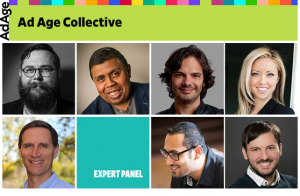The use of artificial intelligence in marketing and advertising has been constantly on the rise due to the technology’s versatility in connecting brands with customers. AI has already found its way into several areas of the industry, most notably in the form of AI-based chatbots designed to enhance and optimize customer service.

However, AI can go so much deeper in improving the overall user experience that a customer may have. AI has the potential to do a lot more in terms of data processing to garner insights for a business. Focusing on the metrics that are specific to a business is just the surface layer. User interaction data can also provide a significant store of data that the company can use to improve customer experience. An element like a product recommendation service based on what the user has searched for and viewed previously is an excellent way to leverage AI to improve consumer interaction with the brand.
These leaders from Ad Age Collective understand the immense potential that AI can provide to the industry as a whole. We asked them to help us understand how a brand can best include AI in designing and upgrading its user experience. Here’s what they had to say.
1. Create a system of checks and balances.
There are plenty of applications of AI across all areas of advertising and marketing. Whether you’re building your own AI or using a technology provider, it’s important to ensure that there are checks and balances and a discernible ROI created. That requires checking that the algorithms are working optimally, mitigating biases and surfacing the most impactful recommendations on an ongoing basis. – Ricky Ray Butler, Branded Entertainment Network
2. Identify your visual brand equity.
As AI-driven user experience becomes the norm, a brand’s differentiated visual equity will be critical to stand out in multibrand platforms. Brands must identify visual elements that are relevant and ownable. For instance, Target owns the bull’s-eye. What else can they own? – Arjun Sen, ZenMango
3. Focus on audio.
Most of the brands have largely been neglecting their audio dimension. Developers and marketers focus mainly on visual and haptics to a lesser extent, while the sound is the sense dimension that connects emotionally. – Marcello Magalhaes, Speakeasy – Knowledge Brokers
4. Use AI to enhance personalization.
AI can be used to enhance the personalization of your offering. Use it to alter product options, add-ons and benefits in real time while a consumer is online searching for your brand in order to directly benefit their lifestyle. – Jessica Hawthorne-Castro, Hawthorne Advertising
5. Use AI to manage out-of-stocks.
Some progressive retailers like Wakefern and Kroeger are using AI-powered image recognition to identify out-of-stock issues and to efficiently restock the shelves. Some brand owners like AB InBev, especially those with direct store delivery (DSD), are also doing the same. Collaborate with your retail channel partners to capture and act on this data. – Dan Beltramo, Onclusive (formerly AirPR)
6. Keep a close eye on it.
While AI is powerful and can help carry out activities easily and fast, it’s not 100 percent reliable. Remember Microsoft’s “Tay” Twitter bot that went from having engaging interactions to using slurs? Use AI in creating content and better experiences, but keep a close eye on it. AI is literal and does not take context into account, nor can it make moral judgments. You need to constantly monitor it. – Syed Balkhi, WPBeginner
7. Be cognizant of inherent bias.
AI is incredibly efficient and underpins many popular systems we use today. One only has to investigate the world of streaming services, with content recommendations powered by AI, to see its impact. However, brands need to remember to not be blinded by AI’s abilities and to be cognizant of inherent biases that exist within AI systems. AI is only as good as its creator — and that creator is human. – Patrick Ward, Rootstrap





